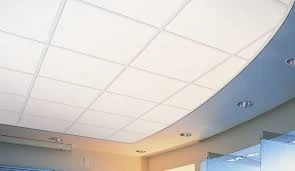- Afrikaans
- Albanian
- Amharic
- Arabic
- Armenian
- Azerbaijani
- Basque
- Belarusian
- Bengali
- Bosnian
- Bulgarian
- Catalan
- Cebuano
- Corsican
- Croatian
- Czech
- Danish
- Dutch
- English
- Esperanto
- Estonian
- French
- German
- Greek
- Hindi
- Indonesian
- irish
- Italian
- Japanese
- Korean
- Lao
- Malay
- Myanmar
- Norwegian
- Norwegian
- Polish
- Portuguese
- Romanian
- Russian
- Serbian
- Spanish
- Swedish
- Thai
- Turkish
- Ukrainian
- Uzbek
- Vietnamese
نوفمبر . 13, 2024 03:33 Back to list
main t ceiling grid
Understanding Main T Ceiling Grids An Essential Element in Modern Construction
In the realm of modern architecture and construction, the ceiling is often overlooked in favor of walls and structural elements. However, the ceiling plays a crucial role not only in aesthetics but also in functionality. One of the key components that contribute to both these aspects is the main T ceiling grid. This framework is fundamental to the installation of acoustical tiles, lighting fixtures, and various other elements that are integrated into ceiling design.
What is a Main T Ceiling Grid?
A main T ceiling grid is a metal framework that provides the support structure for a suspended ceiling system. Composed primarily of “T” shaped components, this grid is designed to hold acoustic panels, light fixtures, and other ceiling accessories securely in place. The grid usually consists of both main tees, which run the length of the room, and cross tees, which connect to the main tees to create a network. The modular design allows for easy installation, adjustment, and replacement, making it a favored choice among contractors and builders.
Importance of a Main T Ceiling Grid
1. Structural Support The primary role of the main T ceiling grid is to provide structural support for ceiling tiles and materials. It ensures that heavy materials are well-distributed across the ceiling area, preventing sagging or misalignment.
2. Aesthetic Flexibility Main T grids offer significant flexibility in design. They can accommodate various styles and finishes, allowing architects and designers to create unique looks while maintaining an organized and cohesive appearance.
main t ceiling grid

3. Acoustic Control Many ceiling tiles used in conjunction with the grid are designed to absorb sound. This feature is particularly important in commercial settings, such as offices and schools, where noise reduction significantly contributes to productivity and an overall comfortable environment.
4. Accessibility One of the practical benefits of using a main T ceiling grid is the ease of access it allows to the utilities and systems above the ceiling. HVAC ducts, electrical wiring, and plumbing can be easily reached for maintenance or repairs without significant disruption to the interior space.
5. Energy Efficiency Properly designed ceiling grids can also contribute to energy savings. By optimizing the placement of light fixtures and incorporating energy-efficient lighting solutions, a well-planned main T grid can help reduce energy consumption and costs.
Installation Process
The installation of a main T ceiling grid involves careful planning and precise execution. It begins with measuring the space accurately and marking the desired height of the ceiling. Next, the main tees are installed parallel to the longest wall, followed by the cross tees, which create the grid structure. Finally, acoustic tiles or other ceiling materials are fitted into the grid, completing the suspended ceiling.
Conclusion
In summary, the main T ceiling grid is a vital component in modern construction that serves multiple functions beyond mere support. Its ability to accommodate design flexibility, enhance acoustic performance, provide accessibility, and contribute to energy efficiency make it an indispensable element in today’s architectural landscape. Whether for commercial or residential projects, understanding and utilizing main T ceiling grids can lead to improved functionality and aesthetic appeal, reflecting the demands and trends of contemporary building practices. As construction technologies and designs continue to evolve, the importance of such foundational elements will only grow, ensuring that ceilings are no longer an afterthought, but rather a deliberate choice in the overall design philosophy.
-
Transform Interiors with PVC Gypsum Ceiling: A Stylish, Durable, and Moisture-Resistant SolutionNewsMay.19,2025
-
The Smart Interior Upgrade: Discover the Durability and Versatility of Gypsum Ceiling Access Panel SolutionsNewsMay.19,2025
-
The Smart Choice for Interior Design: Discover the Value of PVC Gypsum Ceiling SolutionsNewsMay.19,2025
-
Mineral Fiber Ceiling Tiles: The Smart Blend of Performance and AestheticsNewsMay.19,2025
-
Mineral Fiber Ceiling Tiles: The Superior Choice Over Gypsum for Sound and Fire SafetyNewsMay.19,2025
-
Mineral Fiber Ceiling Tiles: Eco-Friendly Strength and Style for Every CeilingNewsMay.19,2025







